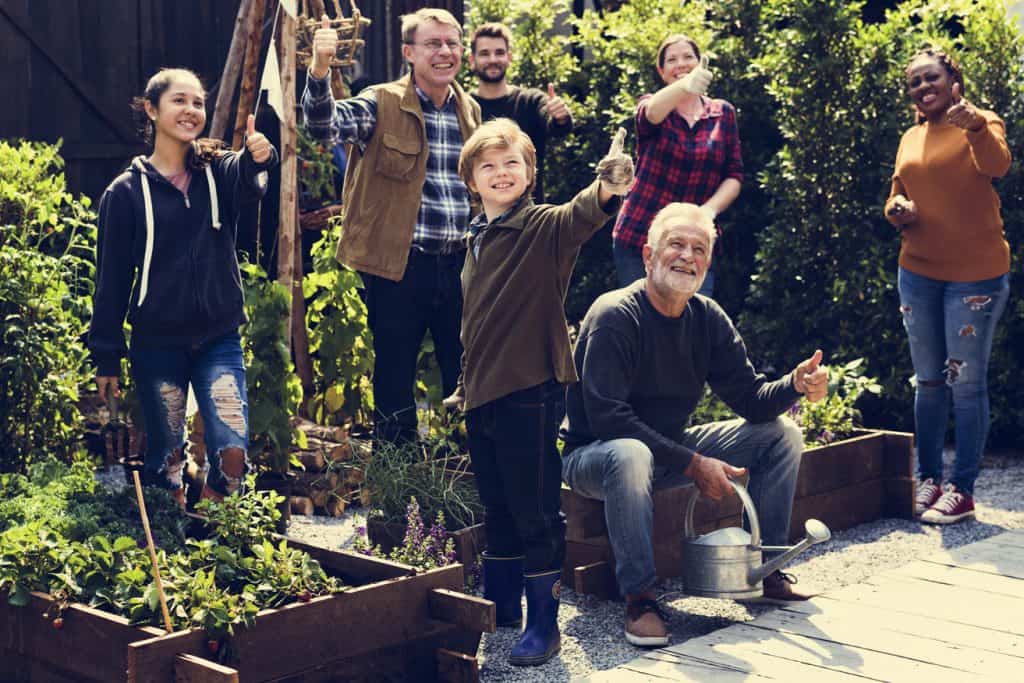The Upside of Upsizing


Empty nesters often choose to simplify life by downsizing to a space with minimal upkeep. But what if the opposite – a bigger place with room for several generations, a la “Downton Abbey” – really suits you?
About 46% of baby boomers want to retire in a larger, nicer place, according to a 2014 survey by the Demand Institute*. Many of these buyers simply want the prestige of a big house or room for people to visit, accepting that they will spend more on maintenance, utilities and taxes. After all, in the words of the wise matriarch of “Downton’s” Crawley family: “Nothing succeeds like excess.”
Experts say you can expect to pay 3% of the value of a home toward taxes, insurance, utilities and maintenance.
But a growing number want family members to move in. One builder’s survey of people who bought multigenerational homes found that at least half reported saving money on shared utilities, transportation and caregiving for children and elderly family members.
A Burgeoning Trend
A record 60.6 million Americans live in a multigenerational household, a Pew Research Center review of 2014 census data shows. That’s 19% of the U.S. population, up from 15% in 2000. This trend took hold amid the Great Recession of 2007-09 and has continued. In fact, according to Pew, “in 2014, for the first time in more than 130 years, adults ages 18 to 34 were slightly more likely to be living in their parents’ home than they were to be living with a spouse or partner in their own household.”
The statistics illustrate the difficulty of achieving financial independence, leaving a sandwich generation of middle-age adults who care for both their parents and their children. About one in seven of them offer financial support to both a parent and a child, according to the Pew Research Center.
These developments have made properties with two master suites or an in-law suite popular, with a majority of buyers age 55 and up who were asked in a 2013 National Association of Realtors survey saying they were willing to pay more for these features. Lennar was one of the first builders to cater to this need with its NextGen homes, followed by similar models from Toll Brothers and the CalAtlantic Group.
Does the “Downton Abbey” dynamic appeal to you? Here are a few bits of wisdom to ponder.

Family Matters and Finances
Before moving more people under one roof, a thorough discussion of what each can contribute and what they hope to get out of it is in order. You may discover new ways this interdependent arrangement can benefit everyone. To take it a step further, you might try renting a vacation house together to see whether the ties that bind can survive the inevitable friction that occurs.
You’ll also want to make sure upsizing doesn’t disrupt your financial plan to the point where your basic needs are no longer protected. Your advisor can investigate scenarios for you and guide you on how to balance helping others and making strides toward your personal goals.
Location and Features
Once you’re on the hunt for a house, you’ll no doubt have a long list of desires from everyone involved. Aside from a prime location, experts say to look for properties with open floor plans that are flexible enough to carve out privacy but also allow space for all to gather.
Depending on your specific needs, you may want a property with an attached apartment or a second master suite with its own bathroom. It’s also a good idea, if you’re building a new house, to make it accessible to all ages and abilities with universal design – meaning doorways and hallways wide enough for someone to use with a wheelchair, or a zero-step entrance, for example. This will make it suitable for aging in place and attractive to a wider range of buyers.
Rules and Roles
The biggest benefit of having several generations in one house is often the simple luxury of more time with loved ones. But the perks can add up. Grandparents who aren’t working outside the home might help with childcare and meal preparation, easing the burden for their adult children. And older people who had trouble making ends meet can find the arrangement less costly than traditional senior housing. Plus there will be a built-in social network. The key to making it work for everyone is in the details – and setting clear boundaries ahead of time. What will each person pay for? How will the chores be split? How will the communal spaces be used? A little planning can help cooler heads prevail when conflicts do arise.
Upsizing Analysis
Pros:
- A house built on memories
- Space for visitors, entertaining
- Space for family members to move in
- Ideal for retirees who want others to travel to them
Considerations:
- Larger property will take more time and money to maintain
- Higher heating and cooling costs, property taxes
- Less money available to pursue other goals
The Modern Family Home

Buying a larger home to share with generations of your family, whether full time or just for vacations and holidays, has its tradeoffs. You’ll have to deal with other people’s schedules, needs and pet peeves, but in return there will be shared meals, shared laughter and the satisfaction of spending time with your loved ones. When it works, it just feels right to live as one big tribe. As Violet Crawley would say, “With any luck, you’ll be happy enough.”
*A collaboration of the Conference Board and Nielsen
Organizations and links are being provided for information purposes only. Raymond James is not affiliated with and does not endorse, authorize or sponsor any of the listed organizations, their websites or their respective sponsors. Raymond James is not responsible for the content of any website or the collection or use of information regarding any website’s users and/or members.
Material prepared by Raymond James for use by its financial advisors.
Recent Posts
- Jeff Hausinger at All Seasons Wealth Named to Barron’s of Top 1,200 Financial Advisors
- Jeff Hausinger of All Seasons Wealth Named to Forbes’ List of Best-In-State Wealth Advisors
- All Seasons Wealth Newsletter – Q2 2024
- Preparing For Expiring Tax Cuts In 2025 With All Seasons Wealth
- Is Now A Good Time To Invest In The Stock Market?
- Money Secrets Of The Wealthy: Insights Into Asset Management, Financial Planning, And More
- All Seasons Wealth In Tampa, Florida
- What Is The Difference Between A Financial Planner And A Financial Advisor?
- The Benefits Of Having A Local Raymond James Backed Financial Advisor
- All Seasons Wealth Newsletter – Q1 2024

